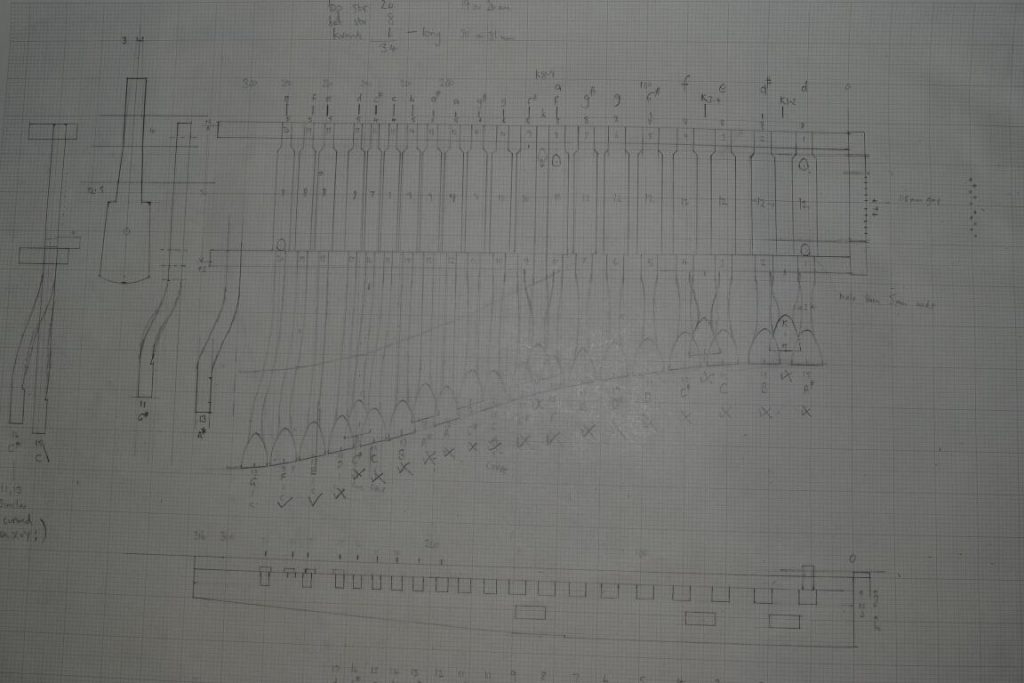Making the keys is the last complicated job for the kontrabas, simply because they are all slightly different, and some of them are curved in two dimensions! I had not drawn the exact details of the keys on the original design, so now had to complete that before I started to cut wood.
The “pegs” on the keys that touch the strings – the “tangents” (or “löv” in Swedish) are mostly centred on the keys, except for the top three, where I spread the keys out a bit to make them easier to construct – this meant the tangents being off centre.
Here are the raw materials for the keys:
The key bodies are made from a good white hardwood used in the piano keyboard support pillars; the tangents are made from tonewood from the soundboard.
The first job was to cut out the keys to a roughly correct shape, but to fit them pretty accurately to the keybox as I went along. I began with the quarter-note keys – there are only three of them and they are simpler than the rest.
You can see prepared blanks in the background – I cut slices from the piano legs before marking out the keys.
That’s the first ten done! You can see they are fitted to the keybox, but the key arms ends ends are still rather rough.
All keys now roughly shaped and fitted.
From the other side you can see the simplicity of the keybox – the old kontrabas design hid the key ends with an outside piece.
This close up view shows some of the curved key “arms”.







